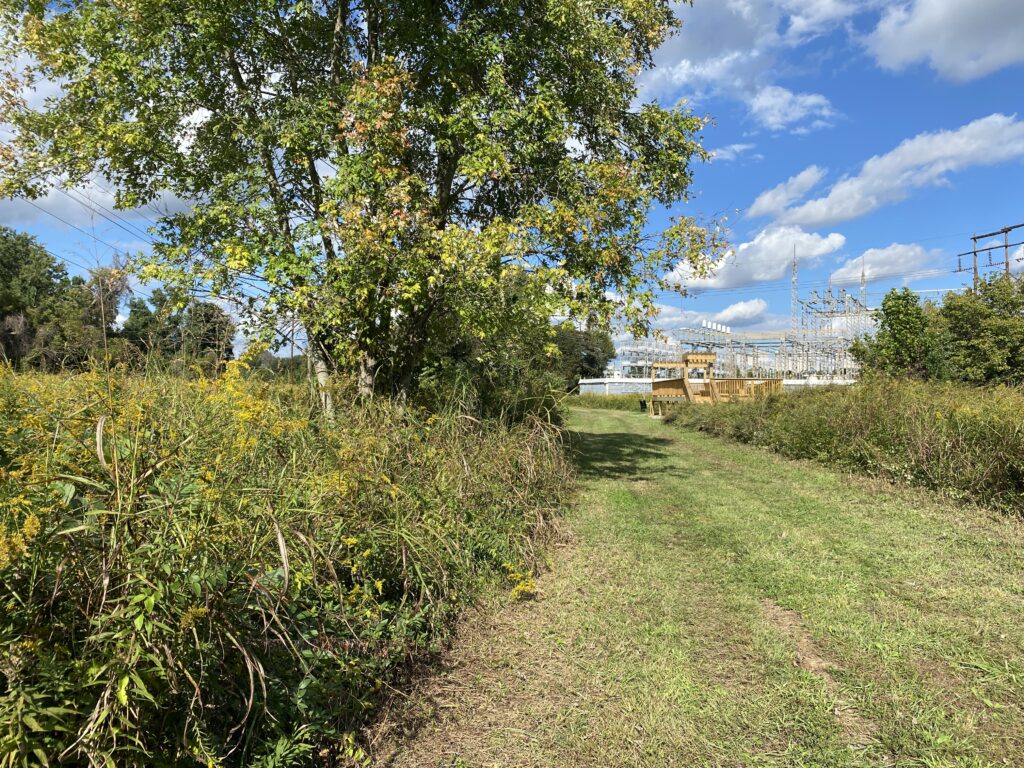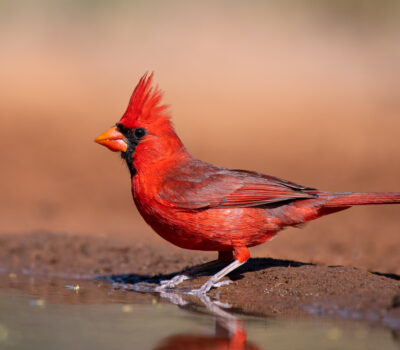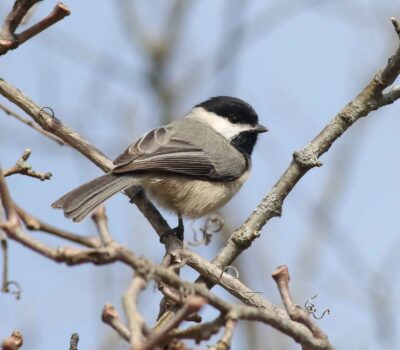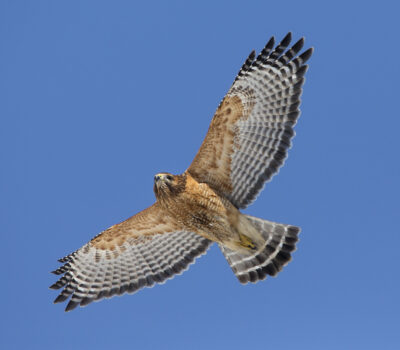Ask a Naturalist: Meadow Habitat and New Trail System at Gateway Nature Preserve
Did you know the Gateway Nature Preserve is home to a variety of ecosystems including forest, creek, and meadow? We have just finished a series of new developments in the Meadow area of the preserve including an accessible birding platform and a meadow trail system! The meadow trail system was made possible by a generous grant from the James G. Hanes Memorial Fund and donations from our 2024 Summer Campaign! Now our community can enjoy birding and meadow exploration in the middle of the city. Let’s explore together and learn about meadow habitat and some of the organisms you can find there.
Meadow Habitats combine perennial native wildflowers and grasses that are sources of nectar and pollen to pollinators. They provide an important solution to declining habitat for pollinators, especially in an urban area like Winston Salem. There are a lot of factors that contribute to declining pollinator insects such as pests, disease, pesticides, pollutants, and loss of habitat. Meadows supply food for bees, butterflies, moths, and birds. In the winters, they also provide shelter for birds and mammals. Meadows require little maintenance which involves cutting it down once a year in late winter. During the summer and fall you can find plants such as goldenrods, asters, and sunflowers. Look around and see what pollinators, plants, birds, or other wildlife you can spot in this meadow! Do you see any butterflies or birds feeding on plant material? Are there any other critters that you can observe?
Birds
Northern Cardinals (Cardinalis cardinalis) are medium-sized birds that do not migrate, and they don’t molt into a dull plumage. They keep their distinctive red and orange feathers all winter. The male is bright red, and the female is brown with a sharp crest and red accents. They are great birds to observe all year long. They are very territorial and love sunflower seeds. They usually nest in the undergrown or edges of property. Fun facts: Only a few female Northern American songbirds sing, the female N. Cardinal are perhaps most vocal during nesting season, apparently to draw the attention of males to bring enough food.
Carolina Chickadees (Poecile carolinensis) are small-sized birds that use nest tubes or nest boxes for nesting sites. They enjoy sunflower seeds, peanut chips, and suet. In winter, they live in flocks of 2-8 birds and defend areas against other flocks. Some chickadee male and female pairs remain together for several years.
Eastern Bluebirds (Sialia sialis) feed by dropping to the ground onto insects, in fall and winter, or by perching on fruit trees to gulp down berries. They usually use nest boxes or old woodpecker holes for nesting. In the early 20th century, populations plummeted due to the introduction of aggressive species like the European Starling and House Sparrows. These birds competed for nesting sites with the bluebirds. Today, the population has recovered due to conservation efforts to install nesting boxes designed to keep out aggressive bird species.
Red-shouldered Hawk (Buteo lineatus) is one of the most distinctively marked common hawks. It has barred, reddish underparts and a banded tail. In flight, translucent crescents near the wingtips help to identify the species at a distance. These forest hawks hunt prey ranging from mice to frogs and snakes. These hawks return to the same nesting territory every year. The oldest known Red-shouldered hawk was a female, at least 25 years, 10 months old. Although the American Crow often mobs the Red-shouldered Hawk, sometimes the relationship is not so one-sided. They may chase each other and try to steal food from each other. They may also both attack a Great Horned Owl and join forces to chase the owl out of the hawk’s territory.
So, what are you waiting for? Stop by the Gateway Nature Preserve today and discover nature in the middle of the city!
Pictured below: (left) Male Northern Cardinal, (center) Carolina Chickadee, (right) Red-shouldered Hawk



